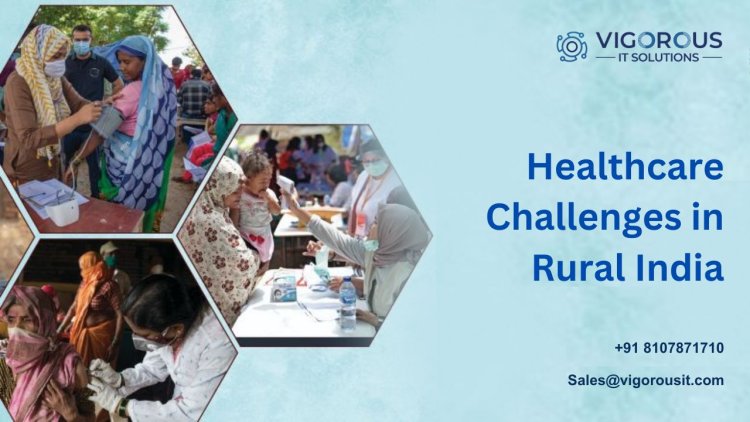Healthcare Challenges in Rural India
Explore rural India's challenges, from inadequate infrastructure to labor shortages, and explore solutions for equitable and accessible medical care.
Share this Post to earn Money ( Upto ₹100 per 1000 Views )

Introduction
Despite significant advancements in medical technology and infrastructure, rural healthcare remains a critical concern. Rural areas of India are home to the majority of the country's population, but these areas face disproportionate challenges when it comes to accessing quality healthcare. As a result of inadequate infrastructure, insufficient medical personnel, and socioeconomic barriers, targeted interventions are urgently needed. Developing effective strategies for bridging the rural-urban healthcare divide requires an understanding of these issues.
Top 5 Healthcare Challenges in Rural India
In India, rural healthcare faces concerning challenges.
1. Geographical Obstacles
It is common for the rural Indian population to be dispersed over vast and often inaccessible areas. Many people cannot access healthcare facilities due to this dispersion, which complicates the establishment and maintenance of healthcare infrastructure.
2. Insufficient Infrastructure
Medical care can be delayed or compromised in rural areas due to a lack of healthcare facilities, including hospitals, clinics, and medical equipment. The cost of basic medical services is high for rural residents, and they must travel a long distance to receive them.
3. Healthcare Workforce Shortage
Rural areas suffer from a shortage of qualified healthcare workers, particularly doctors and nurses. Inequality in the distribution of medical staff results in an imbalanced doctor-patient ratio, which impacts the quality of care.
4. Healthcare Awareness and Education
Health education and awareness campaigns are lacking in rural communities, which results in misconceptions about diseases, prevention strategies, and treatments. There is a lack of information that hinders early intervention and appropriate care-seeking behavior.
5. Factors of Socioeconomic Status
Several factors contribute to higher disease rates in rural areas, including poverty, inadequate sanitation, and poor nutrition. This cycle of poor health is perpetuated by limited access to health resources and medical services.
Build Your Healthcare App Today!
For Free Consultation
Email: sales@vigorousit.com
Phone: +91-8107871710
Visit: www.vignexgen.com
Conclusion
Despite the significant progress made in improving healthcare in rural India, numerous challenges remain. Multifaceted approaches are required to address these challenges, including infrastructure development, workforce expansion, awareness campaigns, and targeted interventions. To bridge the healthcare gap, rural India must ensure equitable access to healthcare for all citizens, regardless of their location or socio-economic status.














